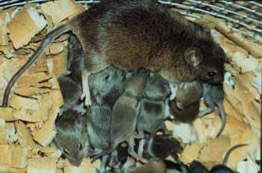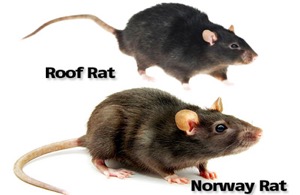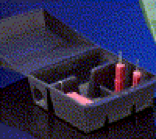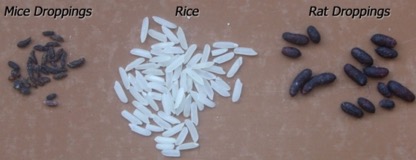Rodents
Why rodents are considered pest:
Rodents are Disease carriers –
Rats and mice have the potential to transmit a number of diseases, some of them potentially fatal. The most notorious is doubtless the plague (or “Black Death”) which has wrought catastrophe on mankind since Roman times. This disease has been responsible for the death of countless millions of unfortunate individuals throughout history and literally restructured the social system in the middle Ages. More details on diseases can be found in “Urban Pest Management in Australia.”
Physical damage Rodents cause–
Both rats and mice need to gnaw continually to prevent their incisor teeth from growing too long. They may also gnaw to gain access to food containers and nesting sites. In one warehouse, the rats were chewing the ends off 1.25 litre plastic bottles, filling them with shredded shrink-wrap and using them for nesting “boxes.” They probably had a good drink to celebrate the impending births. The major risk from their chewing habit is that of causing fires and electrical short circuits by attacking electrical cables. It is not uncommon for whole establishments to shut down because of this damage, with consequent severe monetary loss.
The Three most common rodents that we come across in Homes in Melbourne, Ballarat and Geelong.
- House Mouse (Mus musculus)
- Roof rat (Rattus Rattus)
- Norway rat (Rattus norvegicus)

The House Mouse
(Mus musculus)
Is a small, slender rodent that has a slightly pointed nose; small, black, somewhat protruding eyes; large, scantily haired ears, and a nearly hairless tail with obvious scale rings. The adult mouse weighs about 2/5 to 4/5 ounces. They are generally grayish-brown with a gray or buff belly. Similar mice include the white-footed mice and jumping mice( which have a white belly), and harvest mice (which have grooved upper incisor teeth.)
Habitat: House mice live in and around homes, farms, commercial establishments, as well as in open fields and agricultural lands. The onset of cold weather each fall in temperate regions is said to cause mice to move into structures in search of shelter and food.
Food Habits: House mice eat many types of food but prefer seeds and grain. They are not hesitant to sample new foods and are considered "nibblers," sampling many kinds of items that may exist in their environment. Foods high in fat, protein, or sugar may be preferred even when grain and seed also are present. Such items include bacon, chocolate candies, butter and nutmeats. A single mouse eats only about 3 grams of food per day (8 pounds per year) but because of their habit of nibbling on many foods and discarding partially eaten items, mice destroy considerably more food than they consume
General Biology, Reproduction, and Behavior: House mice are mainly nocturnal, although at some locations considerable daytime activity may be seen. Seeing mice during daylight hours does not necessarily mean there is a high population present, although this usually is true for rats Mice have poor eyesight, relying more on their hearing and their excellent senses of smell, taste and touch. They are considered essentially colour-blind.
House mice can dig and may burrow into the ground in fields or around structures when other shelter is not readily available. Nesting may occur here or in any sheltered location. Nests are constructed of fibrous materials and generally have the appearance of a "ball" of material loosely woven together. These nests are usually 4 to 6 inches in diameter. Litters of 5 or 6 young are born 19 to 21 days after mating, although females that conceive while still nursing may have a slightly longer gestation period.
Mice may breed year-round and a female may have 5 to 10 litters per year. Mouse populations can therefore grow rapidly under good conditions, although breeding and survival of young slow markedly when population densities become high.
During its daily activities, a mouse normally travels an area averaging 10 to 30 feet in diameter, seldom traveling further than this to obtain food or water

The roof rat
(Rattus Rattus)
Rattus Rattus is commonly known as the roof rat, black rat or ship rat. Roof rats were common on early sailing ships and apparently arrived in this country by that route. This rat has a long record as a carrier of plague.
It is about 7-10 inches long and weighs about 5-9 ounces. The Roof Rat has a long tail which is longer than the combined length of the head and body. The Roof Rats have pointed noses and large ears.
Habitat: Roof rats are more aerial than Norway rats in their habitat selection and often will live in trees or on vine covered fences. Landscaped residential or industrial areas provide good habitat, as does vegetation of riverbanks and streams. They will often move into sugarcane and citrus groves. Roof rats are sometimes found living in or around poultry or other farm buildings as well as in industrial sites where food and shelter are available. Being agile climbers, Roof rats frequently enter buildings from the roof or accesses near utility lines which they use to travel from area to area.
Feeding Habits: The food habits of roof rats resemble those of tree squirrels, since they both like a wide variety of fruit and nuts. They also feed on a variety of ornamental and native plant materials. Like the Norway rat, they are omnivorous and will feed on most anything if necessary. Roof rats usually require water daily, though their local diet may provide an adequate amount if high in water content.
Reproduction and Development: Born in a nest about 21 to 23 days after conception, the young rats are naked and their eyes are closed. The 5 to 8 young in the litter develop rapidly, growing hair within a week. When they are 9 to 14 days old, their eyes open and they begin to explore for food and move about near their nest. In the third week they begin to take solid food. The number of litters depends on the area and varies with nearness to the limit of their climatic range, availability of nutritious food, density of the local rat population and age of the rat. The young may continue to nurse until 4 or 5 weeks old. Young rats generally cannot be trapped until about 1 month old. At about 3 months of age they are completely independent of the mother and are reproductively mature
Feeding Behaviour: Roof rats usually begin searching for food shortly after sunset. If the food is in an exposed area and too large to be eaten quickly, yet not too large to be moved, they will usually carry it to a hiding place before eating it. Many rats will cache or hoard considerable amounts of solid food, which they may or may not eat later. When necessary, roof rats will travel considerable distances for food. They can often be seen at night running along overhead utility lines. They may live in trees or attics and climb down to a food source. Roof rats have a strong tendency to avoid new objects in their environment and this can influence control efforts. These rats may take several days before they will approach a bait station or trap.
The Norway rat
(Rattus norvegicus)
Is a stocky burrowing rodentThe Norway rat is found generally at lower elevations but may be found wherever humans live.Also called the brown rat, house rat, barn rat, sewer rat, gray rat, or wharf rat, it is a slightly larger animal than the roof rat. The nose is blunt, the ears are small, close set and do not reach the eyes when pulled down. The tail is scaly, semi-naked and shorter than the head and body combined. When distinguishing the Norway rat from the Roof rat, pull the tail back over the body. The tail of the Roof rat will reach the nose. The tail of the Norway rat will not reach beyond the ears. Adult Norway rats weigh an average of about 1 pound. Their fur is coarse and usually is brownish or reddish-gray above, and whitish-gray on the belly. Blackish individuals occur in some locations.
Habitat : Norway rats live in close association with people. They burrow to make nests under buildings and other structures, beneath concrete slabs, along stream banks, around ponds, in garbage dumps, and at other locations where suitable food, water and shelter are present. On farms they may inhabit barns, granaries, livestock buildings, silos, and kennels. In urban or suburban areas they live in and around residences, in cellars, warehouses, stores, slaughterhouses, docks, and in sewers. Although they can climb, Norway rats tend to inhabit the lower floors of multi-story buildings.
Food Habits : Norway rats will eat nearly any type of food. When given a choice, they select a nutritionally balanced diet, choosing fresh, wholesome items over stale or contaminated foods. They prefer cereal grains, meats and fish, nut, and some types of fruit. Rats require 1/2 to 1 ounce of water daily when feeding on dry foods but need less when moist foods are available. Food items in household garbage offer a fairly balanced diet and also satisfy their moisture needs.
General Biology, Reproduction and Behaviour: Norway rats are primarily nocturnal. They usually become active about dusk, when they begin to seek food and water. Some individuals may be active during daylight hours when the rat population is high, when disturbed (weather change, construction, etc.) or when their food source is threatened.
The territories of most rats are between 50 and 150 feet radius of the nest. In populations where there are many rats and abundant food and shelter, the territories will be towards the lower end of the range. If need be, however, rats will travel 300 feet or more daily to obtain their food and water. In urban areas most rats remain around the buildings and yards which provide their necessities, and unless they are disturbed, they do not move great distances.
Norway rats usually construct nests in below-ground burrows or at ground level
Litters of 6 to 12 young are born 21 to 23 days after conception. Newborn rats are naked and their eyes are closed, but they grow rapidly, eating solid food at 2 1/2 to 3 weeks. They become completely independent at about 3 to 4 weeks and reach reproductive maturity at 3 months of age, sometimes as early as 8 weeks. Female Norway rats may come into heat every 4 or 5 days, and they may mate within a day after a litter is born.
The average female rat has 4 to 6 litters per year and may successfully wean 20 or more offspring annually.
REDKNIGHT RAT & MOUSE 4 BASIC STEPS OF RODENT ELIMINATION
- Inspection
- Sanitation
- Exclusion
- Population Reduction (Traps, Baits, Repellents)
In order for your rodent control program to be effective (as well as efficient) on a long term basis, all four basic steps should be implemented.
Inspection: There are ten signs that Redknight professional pest control look for when conducting their initial inspection: Droppings, tracks, gnaw marks, burrowing, runways, grease marks, urine stains, live or dead rodents, rodent’s sounds and rodent odours. A good inspection will give us a better idea of the size of the population and the routes taken by the rodents. As you will see in Population Reduction, we must intercept the rodents. Proper placements of baits, traps or live traps depend on our inspection!
Sanitation: In order for a large population of rodents to flourish, there has to be an abundance of food and water, as well as easy access to a cosy nesting site. By removing or reducing the factors that make any pest population abundant, you remove and reduce the pest. This is the backbone of Integrated Pest Management that Redknight implements during their inspection. Proper storage of possible rodent food, removal of undesirable vegetation (grass, weeds) and taking care of rubbish, lumber piles or old equipment are just a few examples of good sanitation practices. Homeowners must also realize that pet foods and wild bird feed are all tasty meals for rodents. If rats have easy access to an abundance of dog food (especially at night when feeding is heaviest), they are less likely to be attracted to our rodenticides or baited traps. So it’s important for homeowners to do their bit too.
Exclusion: Controlling rats and mice by making it impossible for them to enter structures is the best way to eliminate and control indoor populations. Although this is not always feasible, exclusion should not be ignored. It is not always possible to do extensive rodent proofing especially with older built homes. But in many cases it can be accomplished with minimum effort. A building can be rodent proofed by eliminating all openings larger than 1/2 inch for rats and 1/4 for mice. Even after this is done, rodents can slip through open doors and windows, gain excess through gaps in roof tiles and along plumbing and other utility lines or (especially in the case of mice) be transported indoors with any merchandise. Exclusion also includes repairing doors and windows that do not operate properly or shut securely. Clients should not forget to inspect and repair air vents that may not be in sound working order too.
Population Reduction: To quickly reduce the population of rats, traps and/or baits are used. In some situations, the use of toxic baits is not safe, legal or desired because of possible odours. When dealing with rats, we prefer a combination of traps and baits
Keep your children and pets SAFE

Redknight Rat Bait Stations
Tamper resistant bait stations protect your rodent bait from moisture, dust or other contaminating elements while keeping rat baits out of reach of non target animals. Locking lid keeps dogs and other animals from opening lid. Made from ABS material to last. These rodent baiters keep your bait fresh while providing a prime feeding station where rats and mice consume your rodenticides.
DIFFERENCE BETWEEN A RAT AND MOUSE DROPPING

Commercial and industrial rodent baiting program
Commercial and industrial rodent baiting programs are available on a permanent basis, combined with a regular pest control service. Short-term programs can be deployed for smaller infestations and in these cases; all equipment is removed when the treatment is complete. We also provide tamper proof stations for high-risk areas.
Redknight Assurance
“Guaranteed all gone or we will return”
Experts in rodent’s extermination and control in Melbourne, Ballarat and Geelong– Redknight Termite & Pest Control.
Contact 1800 70 90 88 for a free quote. Camy 24/7/365


